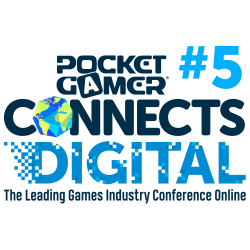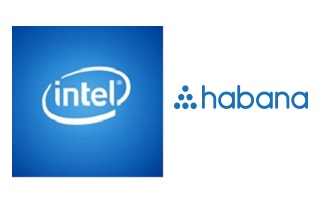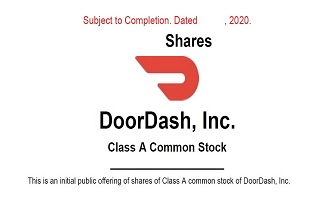eResearch| The gaming industry had a banner year in 2020.
 Panel discussions and keynote speakers at PocketGamer Connects Digital #5 conference (“PGC”) centred on emerging trends and changes to the industry.
Panel discussions and keynote speakers at PocketGamer Connects Digital #5 conference (“PGC”) centred on emerging trends and changes to the industry.
Alternative revenue streams, such as micro-transactions, and higher valuations spurring an increase in M&A activity, were just a few of the topics discussed.
In mobile, changes to advertising rules brought about by Apple (NASDAQ: AAPL) are prompting hypercasual game makers to brace for revenue hits and to look for new types of in-app advertisements.
Gaming Market in 2020
According to a report from the NPD Group, the US video game market grew 27% to $57 billion in 2020. Some of this growth came from the launch of new consoles, stay-at-home orders, and rising unemployment.
Likewise, several ETFs that monitor the gaming industry, such as Global X Video Games & Esports (NASDAQ: HERO), VanEck Vectors Video Gaming and eSports (NASDAQ: ESPO), and Roundhill BITKRAFT Esports & Digital Entertainment (NYSEARCA: NERD) have grown by over 80% in 2020.
M&A Activity Increasing
The recent announcements, such as the Glu Mobile (NASDAQ: GLUU) acquisition by Electronic Arts (NASDAQ: EA), highlights increasing M&A activity, according to a panel discussion at PGC.
The deal, worth $2.4 billion at $12.50 in cash per Glu share, sent both stocks higher. Glu’s portfolio includes hit mobile games such as “Kim Kardashian: Hollywood” and “Monopoly”. At more than a 30% premium, EA expects operational synergies and an improved mobile game capability.
Jim Yang, CV Capital, noted that deals are fuelled by higher stock prices across the industry, enabling large publicly traded firms to raise capital.
Jim also observed that the deal structures are changing as the volume increases: a greater share of the transactions has less money upfront but with higher earnout potential. This strategy incentivizes smaller studios to hit revenue targets without costly and stifling management oversight.
The panel, moderated by Bill Stealey of iEntertainment Network (OTCMKTS: IENT), discussed valuation trends. While financials, like revenue and EBITDA, drive value, investors will also analyze the team, culture, and portfolio synergies. Studios with a track record of meeting deadlines and an exciting game are likely to get higher valuations.
PHOTO 1: Jim Yang, Managing Director at CV Capital

Growing Revenue Stream: GaaS
With more video games generating revenue through digital distribution, subscriptions, and loot boxes, the days of heading to Gamestop (NYSE: GME) and picking up a physical copy of a game might be numbered.
Mario Stefanidis, Roundhill Investments, discussed the emergence of gaming as a service (GaaS). Like software as a service (SaaS), GaaS providers collect revenue on an ongoing basis.
Talk to any modern gamer and they will tell you how games like Fortnite from Epic Games, Team Fortress 2 from Valve, or Candy Crush from Activision (NASDAQ: ATVI) continue to create value for users through combinations and variations of subscriptions, loot boxes, microtransactions, and expansion packs.
Extra content is a huge revenue generator and enabled through digital distribution. Electronic Arts, creator of titles like FIFA and Battlefield, sells additional content under the “Live Service” revenue line. Generating $951 million in the three months ending December 31, 2020, Live Services accounted for 56.8% of total revenue – more than sales of the base games!
Mario also noted that Cloud Gaming and GaaS revenue models synergize well – with the emergence of Amazon Luna (NASDAQ: AMZN), Google Stadia, Microsoft Xbox Cloud Gaming (NASDAQ: MSFT), and Nvidia GeForce Now (NASDAQ: NVDA), GaaS is poised to grow.
Apple Privacy Changes
Apple’s AppTrackingTransparency (ATT) privacy policies have sent shockwaves through the mobile gaming industry. Coming out with the iOS 14 update, the new policy will require explicit consent for mobile apps to collect the user’s identifier.
At issue is the Identifier for Advertisers (IDFA), which allows applications to collect user information to sell targeted advertisements. Targeted advertisements usually generate more revenue for application developers.
In a panel discussion at PGC, developers and publishers discussed potential consequences to the industry. Goncalo Martins of BoomBit noted that hypercasual ad-supported games, which typically generate over 90% of their revenue from advertisements, might see a big revenue hit.
Free to download, hypercasual games operate on the slim difference between the cost to acquire a user and the revenue those users create through watching ads.
All hope is not lost. Christian Calderon, CEO of Gamejam, remarked that developers will change their business models and adapt, focusing more on high-quality intellectual property and changing the types of advertisements. As the advertising rules and customer preferences change, so too will the games.
PHOTO 2: Christian Calderon, Co-founder & CEO of Gamejam

Other solutions discussed were using third-party logins, like Facebook (NASDAQ: FB) and Google (NASDAQ: GOOG) to enable user identification. Ad networks’ margins are expected to grow as third-party logins proliferate.
In-game Advertising
An emerging theme at PGC, was the use of advertisements to generate revenue, particularly in mobile games.
Ben Kaplan of MoPub, a Twitter (NYSE: TWTR) subsidiary, discussed tactics to increase revenue from games. He cited the use of optional ads to offer in-game rewards that are unique, temporally exclusive, and complementary to the gameplay.
Ben also suggested that in-app bidding could yield increased revenue at each impression. In-app bidding is a method to sell a particular impression event to the highest bidder. More and more ad networks are looking to use in-app biding over traditional waterfall algorithms.
Advertising services are huge revenue spinners for technology giants like Google and Facebook. In 2020 they sourced 88.8% and 97.9% of revenue from advertising respectively.
PHOTO 3: Ben Kaplan, Product Marketing Manager at MoPub

Read other eResearch articles on the gaming industry:
- Electronic Arts to Acquire Glu Mobile to Boost Online Gaming Portfolio
- 2021 PGC Conference – Talking Esports
- After Latest $520M VC Raise, Roblox Sets Site on Public Listing in February



